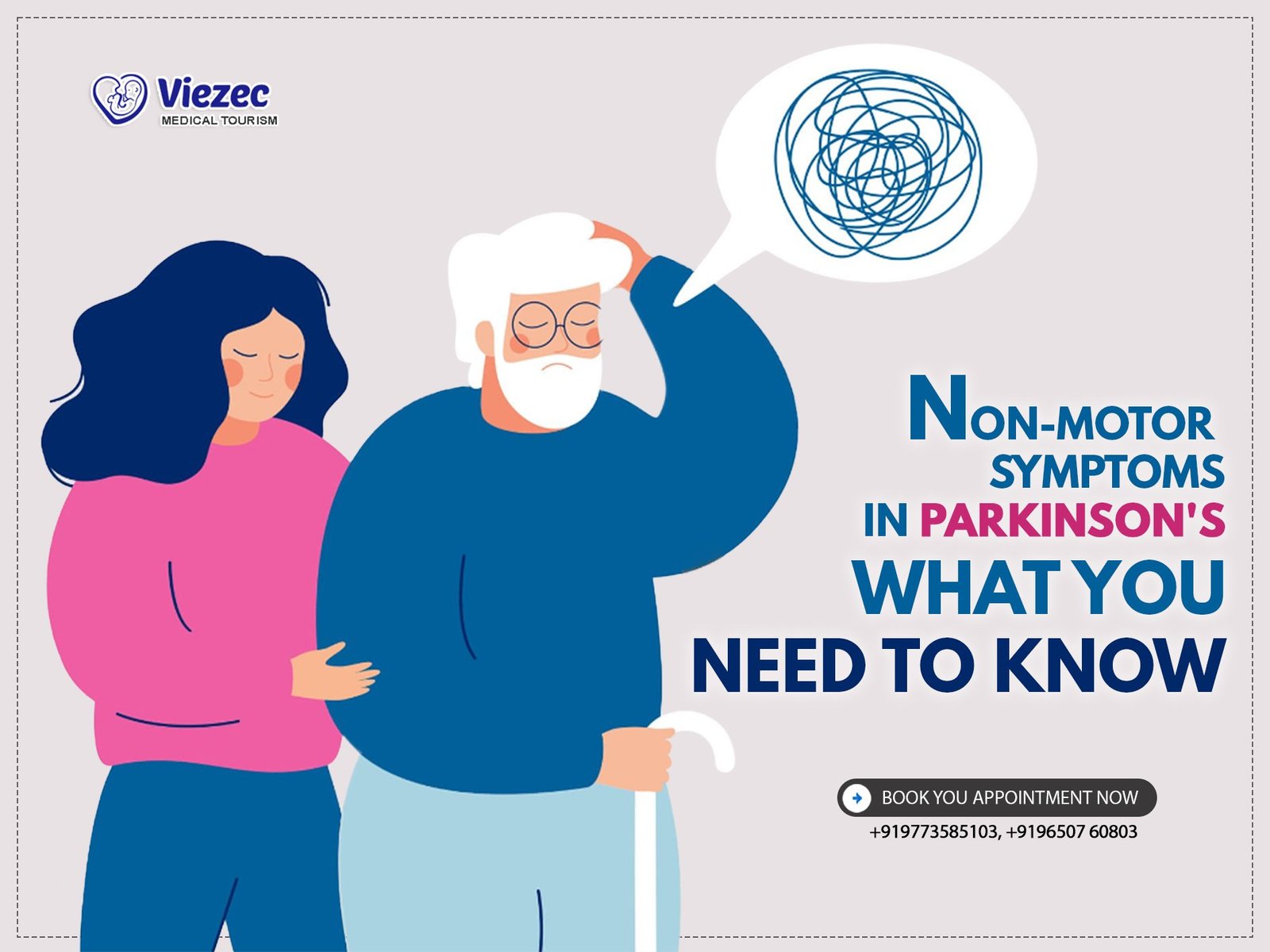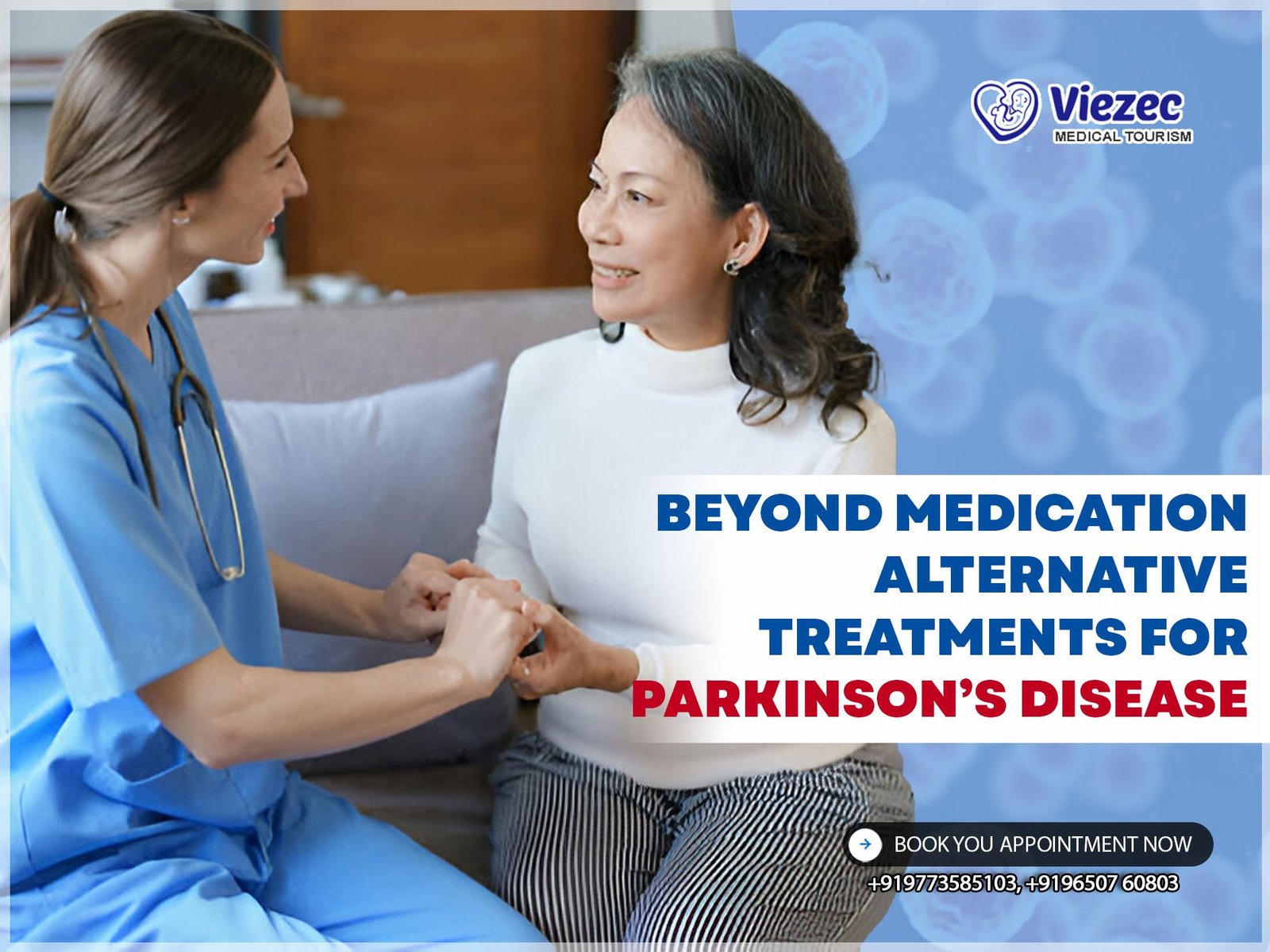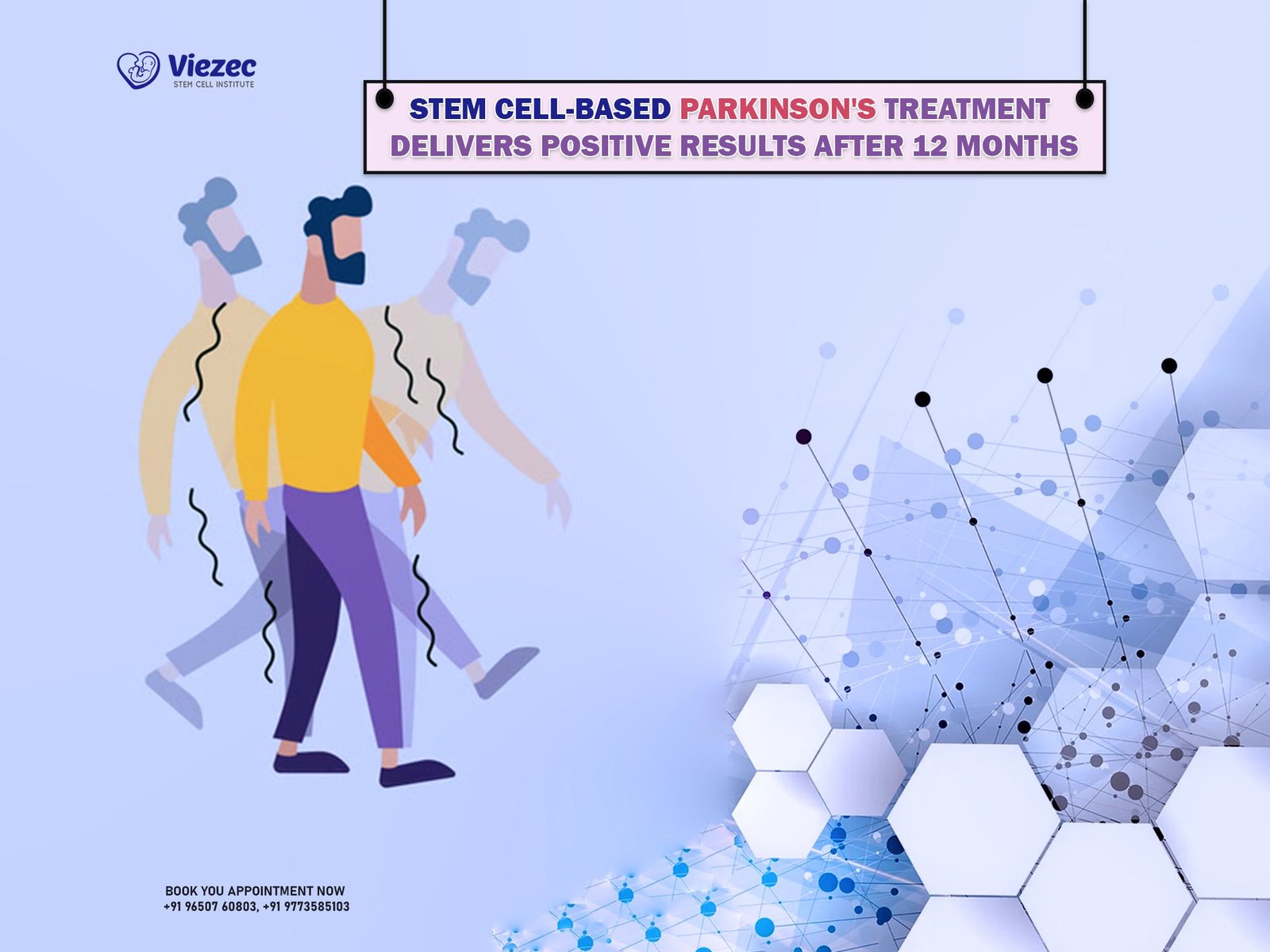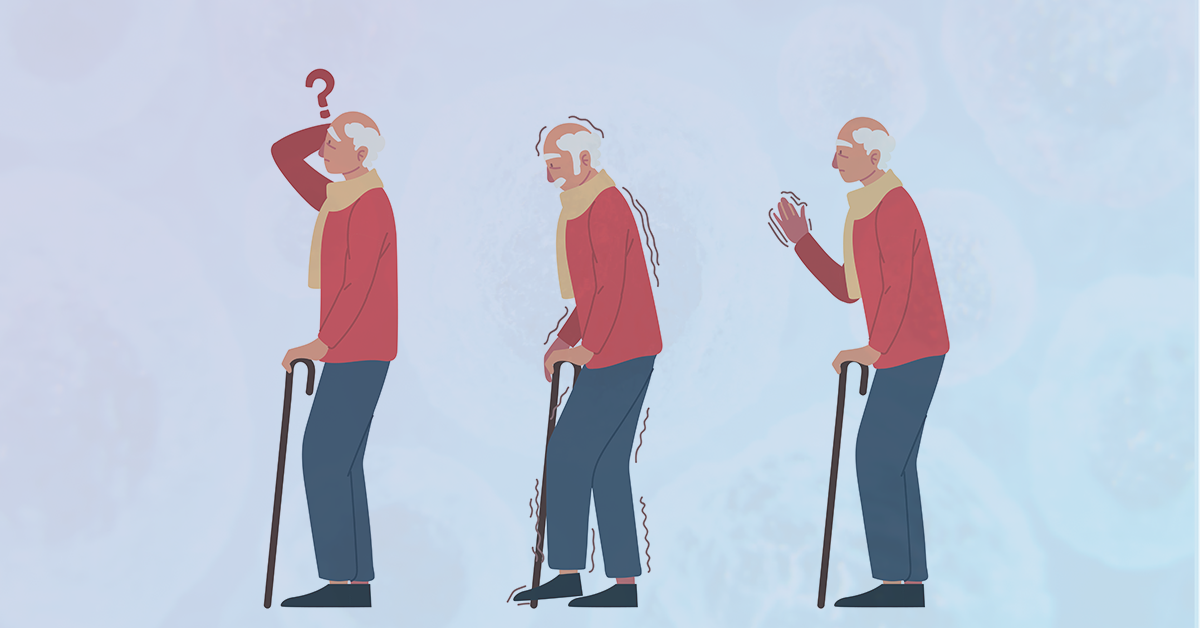Parkinson’s disease (PD) is a progressive neurodegenerative disorder that primarily affects motor functions due to the loss of dopamine-producing neurons in the brain. Characterized by tremors, rigidity, bradykinesia (slowness of movement), and postural instability, PD has long been associated with its motor symptoms. However, a growing body of research highlights the significant impact of non-motor symptoms (NMS) in individuals with Parkinson’s. These NMS, often overlooked, can present years before the classic motor signs and can severely affect a person’s quality of life. Understanding these non-motor aspects is crucial for comprehensive care and management of Parkinson’s disease.
Importance of Recognizing Non-Motor Symptoms
Non-motor symptoms in Parkinson’s disease encompass a wide range of issues including cognitive impairments, mood disorders, sleep disturbances, autonomic dysfunction, sensory problems, and psychiatric symptoms. Recognizing and addressing these symptoms is vital because they often cause more disability and distress than motor symptoms. Non-motor symptoms can affect various aspects of daily life, including emotional well-being, cognitive function, and social interactions. Early identification and management can improve overall quality of life and provide a more holistic approach to treating Parkinson’s disease, ensuring patients receive the necessary support and interventions.
Impact on Quality of Life
The impact of non-motor symptoms on the quality of life for individuals with Parkinson’s disease is profound. Cognitive impairments can lead to difficulties in performing everyday tasks, while mood disorders like depression and anxiety can exacerbate feelings of isolation and helplessness. Sleep disorders disrupt rest and recovery, leading to fatigue and decreased functional ability during the day. Autonomic dysfunctions, such as gastrointestinal issues and bladder problems, can cause discomfort and embarrassment. Sensory symptoms and psychiatric conditions further complicate the clinical picture, making it essential to address these issues comprehensively. Enhancing the understanding and management of non-motor symptoms is key to improving the overall well-being of those living with Parkinson’s disease.
Cognitive Impairments
Memory Problems
Memory problems are a common cognitive impairment in Parkinson’s disease, often presenting as difficulties with short-term memory and recall. Patients may find it challenging to remember recent events, appointments, or conversations. This can lead to frustration and a decline in the ability to manage daily activities independently. Memory impairments in Parkinson’s are thought to be related to changes in the brain’s structure and function, particularly in areas involved in cognitive processing. These changes can be subtle initially but may progress over time. Addressing memory problems through cognitive rehabilitation, medication, and support strategies can help mitigate their impact on daily life.
Executive Dysfunction
Executive dysfunction in Parkinson’s disease involves difficulties with planning, decision-making, problem-solving, and multitasking. This impairment affects the brain’s ability to organize and manage complex tasks, often leading to challenges in both professional and personal settings. Patients may struggle with initiating activities, staying focused, or switching tasks. Executive dysfunction can significantly impact an individual’s ability to work, manage household responsibilities, and maintain social relationships. Therapeutic interventions, such as cognitive-behavioral therapy and occupational therapy, can help improve executive function and enhance the patient’s ability to cope with daily challenges.
Dementia in Parkinson’s Disease
Dementia is a severe cognitive impairment that can occur in the later stages of Parkinson’s disease. It is characterized by a significant decline in cognitive abilities, including memory, attention, language, and problem-solving skills. Parkinson’s disease dementia (PDD) is distinct from Alzheimer’s disease but shares some similar features. The presence of Lewy bodies, abnormal protein aggregates, in the brain is a hallmark of PDD. Patients with PDD may experience hallucinations, delusions, and severe difficulties in daily functioning. Managing dementia in Parkinson’s requires a comprehensive approach, including pharmacological treatments, behavioral therapies, and support for caregivers to ensure optimal care and quality of life.
Mood Disorders
Depression
Depression is one of the most common non-motor symptoms in Parkinson’s disease, affecting up to 50% of patients. It is characterized by persistent feelings of sadness, hopelessness, and a loss of interest or pleasure in activities. Depression in Parkinson’s can be influenced by the neurochemical changes in the brain, as well as the psychological impact of living with a chronic, progressive illness. Addressing depression is crucial because it can significantly affect a patient’s motivation, adherence to treatment, and overall quality of life. Treatment options include antidepressant medications, psychotherapy, and lifestyle modifications to improve mood and emotional well-being.
Anxiety
Anxiety is another prevalent mood disorder in Parkinson’s disease, often co-occurring with depression. It can manifest as excessive worry, panic attacks, or generalized anxiety about daily activities and future uncertainties. Anxiety can exacerbate motor symptoms, leading to increased tremors and muscle stiffness. The chronic stress associated with anxiety can also negatively impact sleep and overall health. Effective management of anxiety in Parkinson’s involves a combination of pharmacological treatments, such as anti-anxiety medications, and non-pharmacological approaches like cognitive-behavioral therapy, relaxation techniques, and mindfulness practices to reduce stress and improve coping mechanisms.
Apathy
Apathy, or a lack of motivation and interest in activities, is a common and often underrecognized mood disorder in Parkinson’s disease. Unlike depression, apathy is characterized by emotional indifference rather than sadness. Patients with apathy may show a reduced initiative, lack of enthusiasm, and diminished engagement in social and recreational activities. This can lead to social isolation and a decrease in the overall quality of life. Addressing apathy requires tailored interventions, including motivational strategies, structured routines, and engagement in meaningful activities. Encouraging social interactions and providing support for participation in enjoyable activities can help alleviate the effects of apathy.
Sleep Disorders
Insomnia
Insomnia, characterized by difficulty falling asleep, staying asleep, or waking up too early, is a common sleep disorder in Parkinson’s disease. It can be caused by various factors, including the disease itself, medication side effects, and other non-motor symptoms like depression and anxiety. Insomnia can lead to daytime fatigue, reduced alertness, and decreased functional ability, further complicating the management of Parkinson’s. Addressing insomnia involves identifying and treating its underlying causes, optimizing sleep hygiene, and using medications or behavioral therapies to improve sleep quality. Proper management of insomnia can enhance overall well-being and quality of life for individuals with Parkinson’s.
REM Sleep Behavior Disorder
REM Sleep Behavior Disorder (RBD) is a sleep disorder commonly associated with Parkinson’s disease, characterized by abnormal movements and behaviors during the REM (rapid eye movement) sleep phase. Patients with RBD may act out their dreams, which can lead to injuries to themselves or their bed partners. This disorder is thought to be linked to the neurodegenerative processes in Parkinson’s that affect the brain regions responsible for regulating REM sleep. Managing RBD involves safety measures to prevent injuries, as well as medications like clonazepam or melatonin to reduce the occurrence of abnormal behaviors during sleep. Addressing RBD is crucial for ensuring a safe and restful sleep environment.
Excessive Daytime Sleepiness
Excessive daytime sleepiness (EDS) is a condition where individuals experience overwhelming drowsiness and a strong urge to sleep during the day. In Parkinson’s disease, EDS can be a side effect of medications, a result of nocturnal sleep disturbances, or a symptom of the disease itself. EDS can significantly impair daily functioning, increase the risk of accidents, and reduce overall quality of life. Managing EDS involves optimizing nighttime sleep, adjusting medications, and using stimulants or wakefulness-promoting agents if necessary. Lifestyle modifications, such as regular physical activity and exposure to natural light, can also help reduce daytime sleepiness.
Autonomic Dysfunction
Gastrointestinal Issues
Gastrointestinal issues, including constipation, nausea, and gastroparesis (delayed stomach emptying), are common autonomic dysfunctions in Parkinson’s disease. These issues can result from the degeneration of the autonomic nervous system and the effects of medications used to treat Parkinson’s. Constipation is particularly prevalent and can cause significant discomfort and complications. Managing gastrointestinal issues involves dietary modifications, such as increasing fiber and fluid intake, using medications to stimulate bowel movements, and addressing any underlying motility problems. Proper management can improve digestive health and enhance the overall quality of life for individuals with Parkinson’s.
Orthostatic Hypotension
Orthostatic hypotension is a condition where blood pressure drops significantly upon standing, leading to dizziness, lightheadedness, and an increased risk of falls. This condition is common in Parkinson’s disease due to the degeneration of the autonomic nervous system and the effects of medications. Managing orthostatic hypotension involves lifestyle modifications, such as staying hydrated, wearing compression stockings, and rising slowly from a seated or lying position. Medications may also be prescribed to help regulate blood pressure. Addressing this condition is crucial to prevent falls and associated injuries, thereby improving safety and quality of life.
Bladder and Sexual Dysfunction
Bladder and sexual dysfunction are common autonomic issues in Parkinson’s disease. Bladder problems can include urinary urgency, frequency, and incontinence, while sexual dysfunction may involve reduced libido, erectile dysfunction in men, and vaginal dryness in women. These issues can significantly impact an individual’s quality of life and intimate relationships. Managing bladder dysfunction involves pelvic floor exercises, medications, and lifestyle changes, such as fluid management. Addressing sexual dysfunction may include counseling, medications, and other interventions tailored to the individual’s needs. Providing comprehensive care for these issues can improve overall well-being and maintain intimate relationships.
Sensory Symptoms
Pain and Discomfort
Pain and discomfort are common sensory symptoms in Parkinson’s disease, affecting up to 85% of patients. The pain can be musculoskeletal, dystonic, or neuropathic, and can significantly impact daily activities and quality of life.
Musculoskeletal pain is often related to rigidity and postural abnormalities, while dystonic pain results from sustained muscle contractions. Neuropathic pain, caused by nerve damage, can present as burning, tingling, or stabbing sensations. Managing pain in Parkinson’s involves a multidisciplinary approach, including physical therapy, medications, and complementary therapies like acupuncture and massage. Effective pain management can greatly enhance comfort and functionality.
Loss of Smell (Anosmia)
Loss of smell, or anosmia, is a common early non-motor symptom of Parkinson’s disease, often preceding motor symptoms by several years. This sensory impairment can affect taste and appetite, leading to nutritional deficiencies and weight loss. Anosmia is believed to result from the accumulation of Lewy bodies in the olfactory bulb and related brain areas. While there is no specific treatment for anosmia in Parkinson’s, addressing its impact on nutrition and overall well-being is important. Patients may benefit from dietary adjustments, flavor enhancers, and nutritional counseling to maintain a healthy diet and body weight despite the loss of smell.
Visual Disturbances
Visual disturbances, including blurred vision, difficulty with contrast, and problems with depth perception, are common sensory symptoms in Parkinson’s disease. These issues can result from both the disease itself and the side effects of medications. Visual disturbances can significantly affect daily activities, such as reading, driving, and navigating the environment. Managing visual disturbances involves regular eye examinations, optimizing lighting conditions, and using visual aids like magnifiers and contrast-enhancing lenses. Addressing these visual issues can improve safety and independence, enhancing the overall quality of life for individuals with Parkinson’s.
Psychiatric Symptoms
Hallucinations and Delusions
Hallucinations and delusions are psychiatric symptoms that can occur in the later stages of Parkinson’s disease. Hallucinations are false sensory perceptions, such as seeing or hearing things that are not present, while delusions are false beliefs that are firmly held despite evidence to the contrary. These symptoms can be distressing for patients and their families, impacting daily functioning and safety. Managing hallucinations and delusions involves adjusting medications, using antipsychotic drugs, and providing supportive care. It is important to address these symptoms promptly to ensure the well-being and safety of the patient.
Impulse Control Disorders
Impulse control disorders (ICDs) in Parkinson’s disease include behaviors such as compulsive gambling, shopping, eating, and hypersexuality. These behaviors are often associated with dopamine replacement therapies used to manage motor symptoms. ICDs can have significant social, financial, and emotional consequences for patients and their families. Managing ICDs involves adjusting medications, providing behavioral therapy, and offering support for affected individuals and their caregivers. Addressing these disorders is crucial to prevent detrimental impacts on the patient’s life and to maintain healthy relationships and financial stability.
Psychosis
Psychosis in Parkinson’s disease can manifest as hallucinations, delusions, and paranoia. It often occurs in the advanced stages of the disease and can be exacerbated by medications. Psychosis can be highly distressing for patients and their families, leading to increased caregiver burden and the potential need for institutional care. Managing psychosis involves careful medication management, including reducing or discontinuing offending drugs, and using antipsychotic medications if necessary. Providing a supportive environment and educating caregivers about the condition can help manage psychosis and improve the overall quality of life for patients.
Emerging Treatments and Research
Pharmacological Interventions
Emerging pharmacological interventions for non-motor symptoms in Parkinson’s disease focus on improving symptom management and enhancing quality of life. New medications targeting specific non-motor symptoms, such as depression, anxiety, and cognitive impairments, are being developed and tested. Additionally, advancements in understanding the neurochemical pathways involved in Parkinson’s disease are leading to more targeted treatments. Pharmacological interventions also aim to minimize side effects and improve the efficacy of existing treatments. Ongoing research is essential to develop new drugs and optimize current therapies, providing better options for managing the diverse non-motor symptoms of Parkinson’s disease.
Non-Pharmacological Therapies
Non-pharmacological therapies play a crucial role in managing non-motor symptoms of Parkinson’s disease. These therapies include cognitive-behavioral therapy for mood disorders, occupational therapy for cognitive impairments, and physical therapy for pain and discomfort. Exercise and physical activity have been shown to improve overall well-being and reduce the severity of non-motor symptoms. Complementary therapies, such as acupuncture, massage, and mindfulness practices, can also provide relief. The integration of non-pharmacological therapies into a comprehensive treatment plan can enhance the effectiveness of pharmacological treatments and improve the overall quality of life for individuals with Parkinson’s.
Stem Cell Research and Its Potential
Stem cell research holds promise for developing new treatments for Parkinson’s disease, including non-motor symptoms. Stem cells have the potential to replace damaged neurons and restore lost functions. Ongoing research is exploring the use of stem cell therapies to regenerate dopamine-producing neurons and improve cognitive and motor functions. While still in the experimental stages, stem cell research offers hope for future breakthroughs in Parkinson’s treatment. Continued investment in research and clinical trials is essential to understand the full potential of stem cell therapies and bring them to clinical practice, offering new hope for individuals with Parkinson’s disease.
FAQs
1. What are the common non-motor symptoms of Parkinson’s disease?
Common non-motor symptoms of Parkinson’s disease include cognitive impairments (such as memory problems and executive dysfunction), mood disorders (like depression, anxiety, and apathy), sleep disorders (including insomnia, REM sleep behavior disorder, and excessive daytime sleepiness), autonomic dysfunction (such as gastrointestinal issues, orthostatic hypotension, and bladder and sexual dysfunction), sensory symptoms (like pain, loss of smell, and visual disturbances), and psychiatric symptoms (including hallucinations, delusions, and impulse control disorders). These symptoms can significantly impact the quality of life and require comprehensive management.
2. How are non-motor symptoms in Parkinson’s disease managed?
Non-motor symptoms in Parkinson’s disease are managed through a combination of pharmacological and non-pharmacological interventions. Pharmacological treatments include medications to address specific symptoms, such as antidepressants for depression, anxiolytics for anxiety, and medications for sleep disorders. Non-pharmacological therapies include cognitive-behavioral therapy, occupational therapy, physical therapy, and complementary therapies like acupuncture and mindfulness practices. A comprehensive approach that integrates both types of interventions can effectively manage non-motor symptoms and improve overall quality of life.
3. Can non-motor symptoms precede motor symptoms in Parkinson’s disease?
Yes, non-motor symptoms can precede motor symptoms in Parkinson’s disease by several years. Symptoms such as loss of smell (anosmia), sleep disturbances, and mood disorders can appear early in the disease course, often before the characteristic motor symptoms like tremors, rigidity, and bradykinesia become evident. Recognizing and addressing these early non-motor symptoms is crucial for early diagnosis and intervention, which can help manage the disease more effectively and improve the patient’s quality of life.
4. What role does stem cell research play in the treatment of Parkinson’s disease?
Stem cell research holds significant potential for the treatment of Parkinson’s disease, including non-motor symptoms. Stem cells have the ability to differentiate into various cell types, including dopamine-producing neurons that are lost in Parkinson’s disease. Research is ongoing to explore the use of stem cell therapies to regenerate damaged neurons and restore lost functions. While still in experimental stages, stem cell research offers hope for future breakthroughs in treatment. Continued investment in research and clinical trials is essential to understand the full potential of stem cell therapies and bring them into clinical practice, offering new hope for individuals with Parkinson’s disease.








